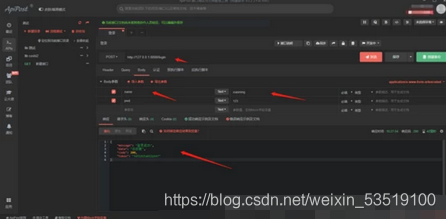1. Writing test cases
1. The most important document in the test, it is the core of the test work, is a set of input and output standards during the test, and is a specific comparison of software requirements. Writing test cases is the basic skill of testers, and not many people can write well.
2. The content of the test case: use case number, use case name, test background, preconditions, priority, test data, test steps, expected results, actual results, remarks.
3. When the testing partner gets the first requirement document, analyze, extract test points, write test cases, and then call development, product and related personnel to conduct use case review.
4. Common methods for writing test cases: equivalence class division method, boundary value analysis method, error inference method, flow chart method, etc.,
5. Learn to question requirements, don't write test cases exactly according to requirements, understand requirements from the user's perspective, and see functions and experiences outside of requirements.
Two, http and https protocol
1. http protocol principle
The HTTP protocol is the abbreviation of Hyper Text Transfer Protocol (Hyper Text Transfer Protocol), which is a transfer protocol used to transfer hypertext from a World Wide Web (WWW: World Wide Web) server to a local browser. ----Baidu brain supplement
2. The difference between TCP and UDP
TCP and UDP are protocols in the transport layer in the OSI model. TCP provides reliable communication transmission, while UDP is often used for broadcast and detailed control to the application communication transmission. —Baidu brain supplement
3. The difference between get and post
1) Get, it is used to obtain information, it is only to obtain and query data, which means that it will not modify the data on the server. From this point of view, it is data safe, and Post it will be mentioned later It is possible to modify the data, so this is also one of the differences between the two.
2) Post, it can send a modification request to the server to modify the server. For example, we need to post on the forum and comment on the blog. This requires Post. Of course, it can only get data. .
3. Business understanding ability
First of all, it is clear that we must understand the business. Only by understanding the business can we do a good job of functional testing and there will be certain improvements.
When to connect to automation-----when your system becomes stable.
When to intervene in interface testing-----When the interface development is completed.
When to intervene in performance testing-when there is a promotion, or panic buying, etc.
Fourth, the use of test tools
1. Interface testing tool: apipost
Use apipost to test the interface, enter the url address, request method, parameters and click send to see if the interface is correct.

2. Performance testing tool: jmeter
Use jmeter to perform performance test on the system, perform stress test, load test, stability test, etc. on the system

Five, automated test code writing ability
1. ui automation writing
a. Web automation: generally use python+selenium to write ui automation scripts for web sites
b. App automation: generally use python+appuim to write ui automation scripts on the mobile terminal
2. Automatic interface writing
Generally use python+requests for automatic interface testing.
 Six, proficient in SQL
Six, proficient in SQL
1. Commonly used sql statements, such as adding, deleting, modifying and checking.
2. Understand database transactions, be able to write stored procedures, and be proficient in commonly used system functions.
3. Understand and can perform database backup, migration, restoration, mirroring, etc.
4. Tuning the sql statement and monitoring the performance of the statements that can be run.
5. Understand the cluster of the database.
Seven, Linux
1. Linux is a basic skill for testers. You don't need to master Linux commands that are too difficult or very unusual. You can check logs normally and locate problems.
2. Junior testers often encounter situations when they find bugs and developers do not recognize or are unwilling to solve them. How can testers get rid of such problems?
According to the level of the bug log found, to view the log and locate the problem, the first thing to talk about here is the log level. The higher the log level, the less information is output.
info: Code info information, excluding some debug information such as SQL statements.
warning: Code warning information.
error: The program itself reports error information
Generally, the bugs that do not meet the requirements are in the debug, and the program itself reports errors in the error.
Here I recommend a software testing group I created by myself, QQ: 642830685. The group will share software testing resources, test interview questions and testing industry information from time to time. You can actively exchange technology in the group.